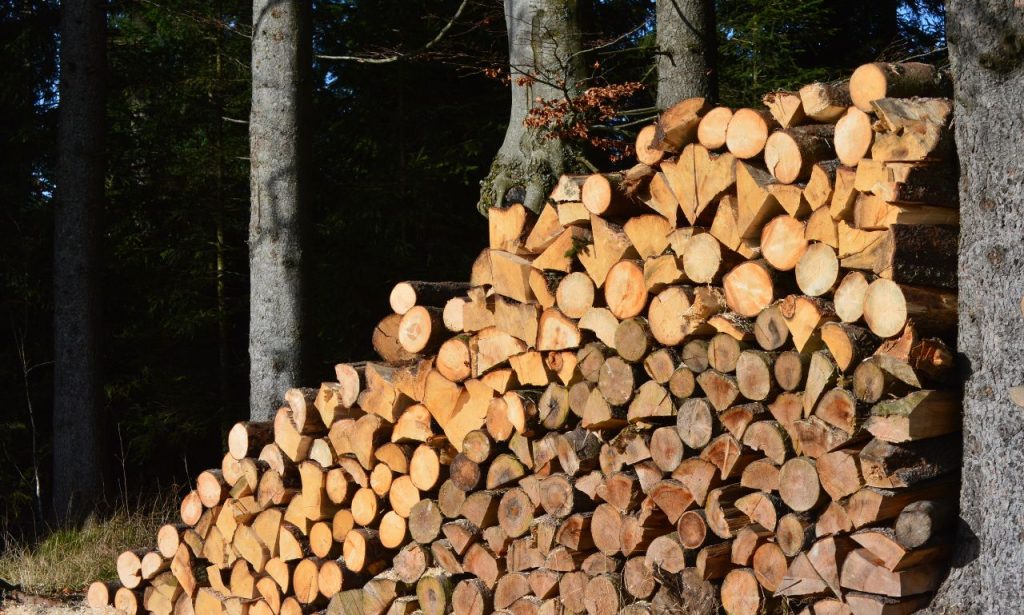As the crisp air of autumn arrives and the chilly winds of winter approach, the comforting crackle of a fire becomes a welcome sound. For many, the cost of firewood can be prohibitive. However, with a bit of resourcefulness, you can find free firewood to fuel your home fires. This article will offer a detailed guide on how to find free firewood, presenting unique insights and practical tips to help you secure this valuable resource without spending a dime.
6 Places to Find Free Firewood Near You
Look in Your Local Area
Your immediate surroundings can be a treasure trove of free firewood. Here are some tips for scouring your local area:
- Neighborhood Cleanups; Many communities organize cleanup days where residents can dispose of large items, including tree branches and logs. Keep an eye on local bulletin boards or community websites for announcements.
- Local Parks: Some parks allow residents to collect fallen branches and dead wood. Check with your local parks department for regulations.
- Construction Sites: Often, construction projects involve clearing land. Speak with site managers who may be willing to let you haul away felled trees and branches.
Craigslist
Craigslist is a goldmine for finding free firewood. Here’s how to use it effectively:
- Search Regularly: New postings appear daily. Use search terms like “free firewood,” “free wood,” and “tree removal.”
- Set Alerts: Craigslist allows you to set alerts for specific search terms. This means you’ll get notified as soon as a relevant post appears.
- Be Quick: Free items go fast on Craigslist. Respond promptly to postings and be ready to pick up the wood as soon as possible.
Your Own Woodlot

If you have access to land, even a small one, you might have a sustainable supply of firewood right at your feet:
- Thinning: Regularly thin out your woodlot to promote healthy forest growth. This process yields a steady supply of firewood.
- Dead Trees: Remove dead or dying trees. They burn well and help maintain the health of your woodlot.
- Pruning: Regular pruning of trees not only helps them grow better but also provides a source of kindling and smaller logs.
Tree Companies
Tree companies often have to dispose of large quantities of wood. Here’s how you can benefit:
- Contact Local Companies: Reach out to local tree service companies and let them know you’re interested in their wood.
- Offer to Pick Up: Make it easy for them by offering to pick up the wood from their job sites.
- Build Relationships: Establishing a good relationship with a tree service company can lead to a steady supply of free firewood.
National Forests
National forests can be a source of free firewood, but there are regulations to follow:
- Permits: Many national forests require a permit for firewood collection. These are often very affordable or free. Contact the local forest service office for details.
- Designated Areas: Firewood collection is usually restricted to certain areas. Make sure to follow the guidelines to avoid fines.
- Sustainable Practices: Always adhere to sustainable practices to ensure that the forest remains healthy for future generations.
Look Around After a Storm
Storms can bring down a lot of wood. Here’s how to make the most of it:
- Safety First: Ensure it’s safe to collect wood after a storm. Avoid areas with downed power lines or unstable trees.
- Check Regulations: Some areas have specific rules about collecting storm-damaged wood. Check local regulations to ensure you’re compliant.
- Neighbors: Offer to help neighbors with storm cleanup in exchange for the wood. Many will be grateful for the assistance.
Sawmills
Sawmills can be an unexpected source of free firewood. They often have offcuts and scraps that can be used for burning:
- Contact Local Mills: Reach out to sawmills and ask if they have scrap wood available.
- Types of Wood: Be aware that not all types of wood are suitable for burning. Avoid treated or painted wood.
- Collection: Arrange for regular pickups if the mill is willing to provide you with a continuous supply.
Tips for Bringing Home Free Firewood
Bringing home free firewood involves more than just finding it. Here are some crucial tips:
- Transportation: Ensure you have the right vehicle for transporting large quantities of wood. A truck or trailer is ideal.
- Cutting and Splitting: Invest in good-quality tools for cutting and splitting wood. A chainsaw and a splitting maul are essential.
- Storage: Proper storage is crucial to ensure your firewood dries well and burns efficiently. Stack the wood off the ground and cover it to protect it from the elements.
What Type of Firewood to Look For

Not all wood burns the same. Here’s a guide to the best types of firewood:
- Hardwoods: Oak, maple, and hickory are excellent choices. They burn hot and long, providing a steady source of heat.
- Softwoods: Pine and spruce burn quickly and are great for kindling but less effective for long-lasting heat.
- Dry Wood: Always look for seasoned (dry) wood. Freshly cut (green) wood contains a lot of moisture and burns inefficiently.
Conclusion
Finding free firewood is a rewarding endeavor that not only saves money but also promotes sustainable living. By exploring local resources, building relationships with tree companies, and utilizing online platforms like Craigslist, you can secure a steady supply of firewood. Remember to follow local regulations and practice safe and sustainable wood collection.
ALSO READ: Churches Accepting Clothing Donations
FAQs
A: Yes, but you typically need a permit and must follow specific guidelines.
A: Hardwoods like oak, maple, and hickory are the best due to their long burn times and high heat output.
A: Seasoned wood is lighter, has cracks in the ends, and makes a hollow sound when struck.
A: No, avoid burning treated, painted, or stained wood as they can release harmful chemicals.
A: Store firewood off the ground, covered on top but with good airflow on the sides to ensure it stays dry.





